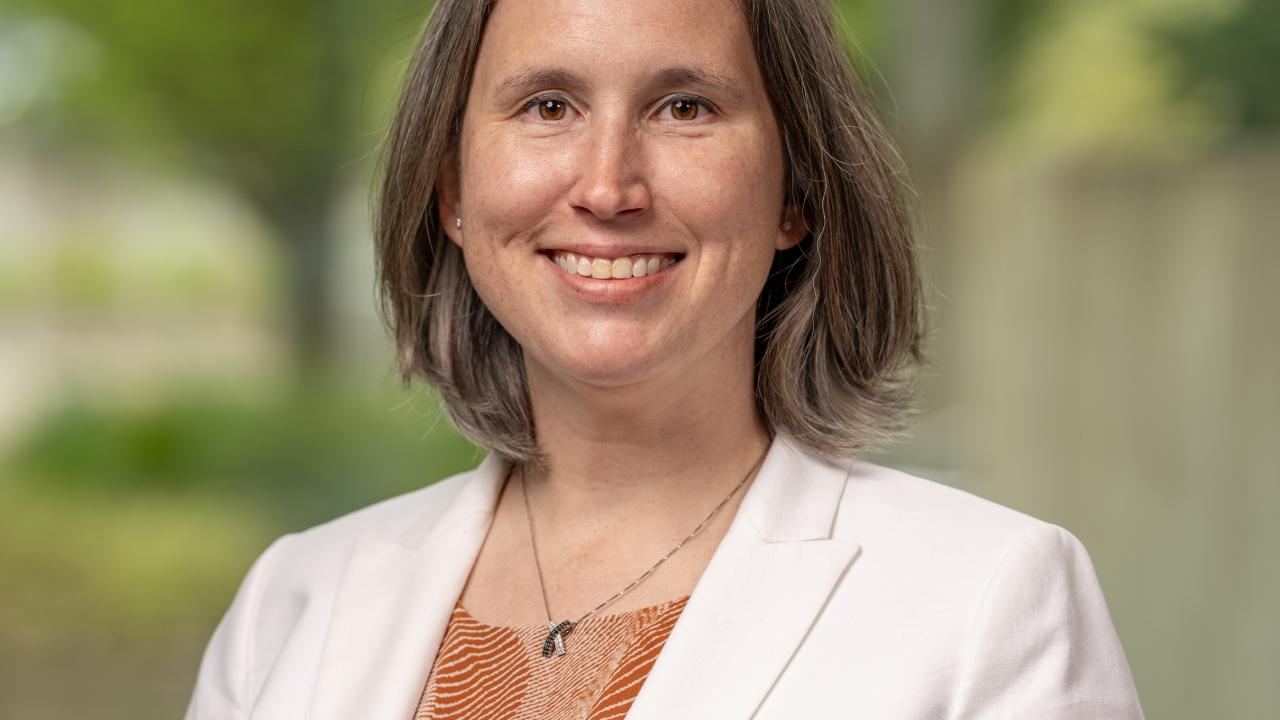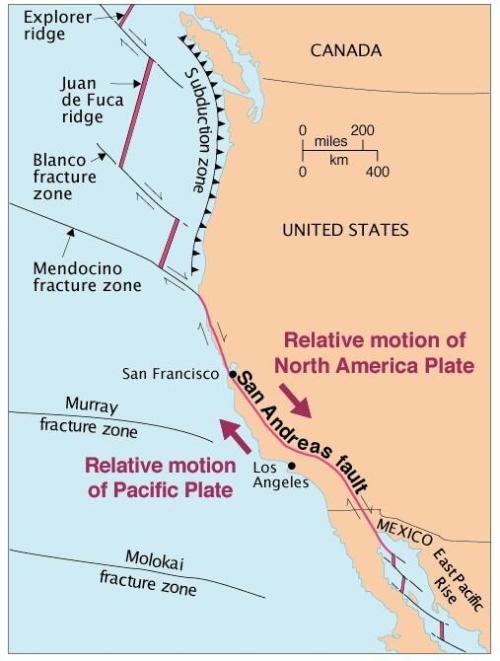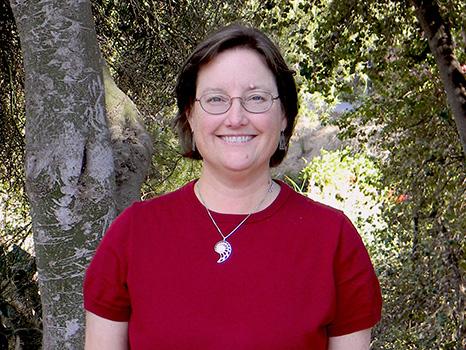
Welcoming Inaugural Kellogg Endowed Chair Dr. Amanda Thomas to Earth and Planetary Sciences
Dr. Thomas will lead geophysics research and honor the legacy of Louise H. Kellogg
Imagine a catastrophic earthquake shaking California's coastline, followed by landslides that block vital roads. Or a rainstorm hitting a region devastated by wildfires, triggering debris flows of unreinforced material into densely populated areas. In a world where geohazards often occur in a cascading chain of events, understanding how these natural disasters intersect is more crucial than ever. These challenges are exactly what the field of geophysics, led by experts like Dr. Amanda Thomas, seeks to address.
As the inaugural Louise H. Kellogg Endowed Chair in the Department of Earth and Planetary Sciences (EPS) at UC Davis, Dr. Thomas will advance scientific excellence in geophysics through visionary leadership at UC Davis and expand the reach of geosciences by teaching and mentoring both undergraduate and graduate students.
“I’m looking forward to meeting the EPS community, being inspired by them, and learning their needs and how I can support them,” said Dr. Thomas.
Following an accomplished tenure as an associate professor at the University of Oregon, Dr. Thomas will join EPS on April 1st. She said the opportunity feels like returning home to Northern California as she completed her Ph.D. in Geophysics at UC Berkeley and did her postdoctoral fellowship at Stanford University.

Dr. Thomas specializes in observational seismology, studying the vibrations or shaking of the Earth's surface. By observing these movements, she can learn more about natural processes that affect our daily life from tectonic movements, volcanic activity, and changes in the Earth's surface. This research involves gathering and analyzing data, as well as developing simplified models to better understand how the planet works. This, in turn, improves our ability to understand and prepare for geohazards like earthquakes and volcanic eruptions, helping communities stay safe.
One of Dr. Thomas’ major feats was leading the seismic monitoring of the Rattlesnake Ridge landslide in Washington State, which poses a significant threat to the community of Union Gap and the nearby transportation corridor. The ridge began collapsing in 2017 and has been moving slowly, however its potential to cause disruption remains a concern.
Dr. Thomas’ arrival at UC Davis is not just a personal return but also a chance to continue the work of Dr. Louise H. Kellogg, the late EPS distinguished professor and department chair whose contributions to the field of geophysics are nothing short of monumental. The Louise H. Kellogg Endowed Chair was established in 2023 with a generous $2 million gift from Douglas Neuhauser, Kellogg’s husband, as a tribute to her legacy. Dr. Thomas’ appointment as the inaugural holder of this position provides an opportunity to honor Kellogg’s vision of a vibrant, interdisciplinary geophysics community at UC Davis.
Making an Impact in Geophysics
Dr. Thomas is eager to build upon the strong foundation established by the geoscientist Dr. Kellogg in advancing geophysics research. Recognized for her groundbreaking work on episodic tremor and slip phenomena, Dr. Thomas has made pivotal contributions to understanding earthquake source properties, stress states, and seismicity at plate boundaries, in other words, how earthquakes happen and what causes them. She has specifically focused on the edges where large pieces of the Earth’s crust meet, called plate boundaries. Two areas are notorious for causing major earthquakes are the San Andreas Fault and the Cascadia Subduction Zone.

But for Dr. Thomas, the research is only part of the equation. She is equally passionate about creating opportunities for students at all levels to engage with the geosciences in meaningful ways. “I want to get students excited about Earth Science. I want them to understand that a career in geoscience means having the tools that they need to solve some of the world’s biggest problems.”
Dr. Thomas's dedication to the next generation of scientists is evident in her approach to mentorship. “Students apply to graduate school because they want to do research, and they’re accepted because of their great potential," Dr. Thomas said. "But no one arrives fully formed. Everyone has areas where they need to grow. My role is to help shape them into complete scientists by the time they graduate."
Furthermore, Dr. Thomas is dedicated to keeping geoscience accessible to both students and faculty by helping cover or offset incidental research costs. She has witnessed how financial barriers can prevent talented individuals from pursuing critical Earth science research. “Field vehicles break down and need repairs, software can cost thousands of dollars, and travel expenses for conferences can be prohibitive. These challenges can prevent researchers from accessing the tools they need to succeed,” she said.
As the Chief Technology Officer for the nation’s first subduction zone earthquake hazards center, Cascadia Region Earthquake Science Center (CRESCENT), she remains keen on fostering collaborations between researchers. She sees the potential to support open-source cyberinfrastructure projects that would benefit the broader geoscience community. Additionally, she is interested in exploring the possibility of establishing a visiting faculty fellowship, allowing scientists from outside the department to come work with researchers in the EPS department for three to five months.
Preserving a Legacy
Louise H. Kellogg’s impact on UC Davis, and the broader geoscience community, was profound and deeply felt by all who knew her. As Dr. Thomas said, “Louise was not only a brilliant scientist but also a beloved mentor and friend to those around her”. Her dedication to the department, to research, and to her colleagues left a legacy that continues to inspire.

Dr. Kellogg was heavily involved in numerous projects funded by the National Science Foundation (NSF), including the Computational Infrastructure for Geodynamics (CIG), which aimed to develop, benchmark, and distribute earth modeling software that could help geoscientists understand complex geodynamical models and how they related to one another. Throughout her tenure, she was able to bring together researchers from multiple institutions.
Dr. Kellogg’s impact also extended to the Deep Carbon Observatory (DCO), where she helped lead efforts to better understand the Earth’s carbon cycle, particularly the vast amounts of carbon stored in the deep Earth. The DCO's modeling initiative aimed to integrate knowledge of carbon's movement and transformation across the core, mantle, and crust over the past 4.5 billion years. “Louise’s successful proposal to this grant allowed her to lead a visualization group at the observatory to provide the geoscience community with better communication and bigger tools,” said Douglas.
Dr. Kellogg’s expertise was so respected that she was appointed Chair of an NSF evaluation committee, which assessed whether a major project called EarthScope should be funded. The $300 million NSF-funded initiative sought to provide detailed imaging of the continental U.S. and its subsurface. One of the key components of this was the San Andreas Fault Observatory at Depth (SAFOD) project, which involved gathering rock and soil samples for seismic analysis by drilling deep into the San Andreas Fault, an area known to cause magnitude 6 earthquakes about every 30-35 years. Another of her contributions is the W.M. Keck Center for Active Visualization in the Earth Sciences (KeckCAVES) at UC Davis, an immersive visualization facility that she helped bring to life through a successful proposal to the Keck Foundation. As the director of KeckCAVES, Louise provided earth science researchers with cutting-edge tools to explore and understand complex data.
Dr. Kellogg’s dedication to UC Davis was unwavering. During her tenure as Chair of the EPS Department, Douglas said she hired half the faculty, and even turned down three offers to leave, choosing instead to stay and build a world-class department.
“Louise brought care, interest, and support for the EPS department,” said Douglas.
Dr. Kellogg expressed her desire to endow a chair at the department to her husband just days before her passing. “I remember sitting with her three days before. We talked and she said she wanted to endow a chair to the department. And so, she left me to get that done.” Louise wanted to leave behind a legacy that would continue to support the research and aspirations of future generations of geoscientists; it would help to fund ideas that are pivotal to the field, even if funding agencies aren’t ready to fund them yet.
The EPS Department is honored to welcome Dr. Thomas as the Louise H. Kellogg Endowed Chair, and looks forward to the innovative contributions, leadership, and inspiration she will bring to the department, continuing Dr. Kellogg’s legacy of excellence and collaboration.
